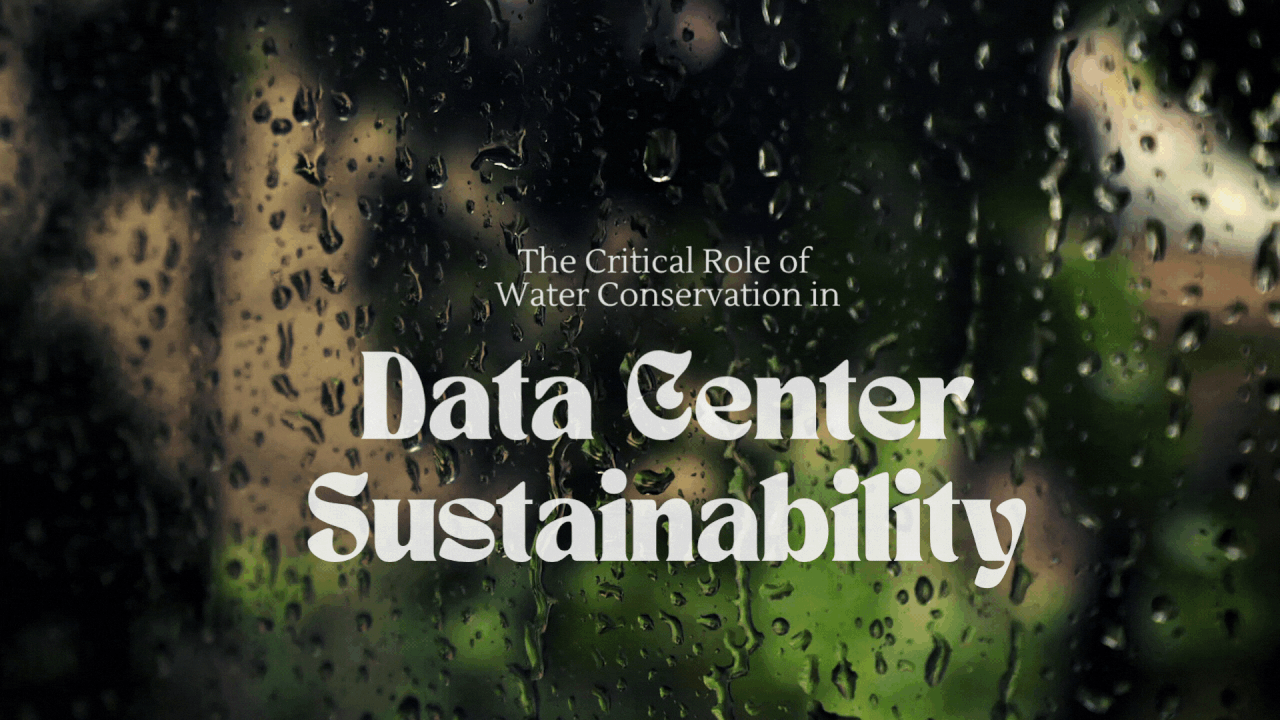
The Critical Role of Water Conservation in Data Center Sustainability
As the world becomes increasingly reliant on digital technology, the demand for data centers has skyrocketed. These data centers, which house the servers responsible for processing, storing, and managing digital data, consume significant amounts of energy and water. Ensuring data center sustainability has therefore become an essential aspect of environmental responsibility. In this article, we will explore the importance of water conservation in data center sustainability and discuss innovative solutions to minimize water use.
The Water Footprint of Data Centers
Data centers require large amounts of water to maintain optimal operational conditions. This water is primarily used for cooling purposes, as the heat generated by servers and other equipment must be dissipated to prevent overheating and maintain efficiency. Additionally, water is used for humidification to regulate air moisture levels, as well as for general facility maintenance.
The high water consumption of data centers poses a significant challenge to sustainability, as it contributes to the depletion of local water resources and exacerbates water scarcity in some regions. According to a study by the Uptime Institute, data centers can consume up to 3.8 million liters (1 million gallons) of water per day for cooling purposes alone. This underscores the urgent need for water conservation in data center operations.
The Importance of Water Conservation in Data Center Sustainability
Reducing Environmental Impact
By conserving water, data centers can reduce their environmental footprint and contribute to the responsible management of global water resources. This is particularly important in regions experiencing water stress or scarcity, where water conservation can help mitigate the risk of depleting critical water supplies.
Cost Savings
Reducing water usage in data centers not only benefits the environment but also translates to cost savings for operators. Water consumption and associated costs can be significantly decreased by implementing water-saving technologies and practices, leading to a more cost-effective and sustainable operation.
Regulatory Compliance
As concerns over water scarcity and resource management grow, regulatory bodies are increasingly focusing on the water usage of various industries, including data centers. By adopting water conservation practices, data centers can ensure compliance with current and future regulations, avoiding potential penalties or restrictions.
Innovative Solutions for Water Conservation in Data Centers
Air-Cooled Systems
One way to reduce water consumption in data centers is by using air-cooled systems, which rely on fans or natural convection to dissipate heat. While air-cooled systems can be less efficient than water-cooled systems in certain scenarios, advances in technology and innovative design approaches have significantly improved their performance and viability as a sustainable cooling solution.
Liquid Immersion Cooling
Liquid immersion cooling is an innovative technique that involves submerging servers in a non-conductive liquid coolant. This method efficiently transfers heat away from the servers, reducing the need for traditional cooling infrastructure and minimizing water usage. While still relatively new, liquid immersion cooling has the potential to revolutionize data center cooling and contribute to water conservation efforts.
Water Reuse and Recycling
Another approach to water conservation in data centers is the implementation of water reuse and recycling systems. By capturing and treating wastewater, data centers can reduce their overall water consumption and limit their impact on local water resources. This can include capturing condensation from cooling systems, recycling water used for cooling, or even utilizing alternative water sources, such as rainwater or greywater.
Conclusion
Water conservation is an essential aspect of data center sustainability, with significant environmental, economic, and regulatory implications. By embracing innovative solutions and adopting water-saving practices, data centers can reduce their water footprint, contributing to the responsible management of global water resources and ensuring the long-term viability of the data center industry.
Additional Resources
A new front in the water wars: Thirsty, giant data centers - The Washington Post
Standard 90.4: Energy Standard For Data Centers, February 2023 ASHRAE Journal
Driving Energy Efficiency and Sustainability Through Integration – AutomatedBuildings.com
What is Data Center Sustainability? | Green Data Center | Nlyte
Introduction to Integrated Data Center Management (IDCM) – YouTube
Introduction to Integrated Data Center Management (IDCM) – YouTube